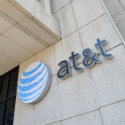AT&T executives boast of DirecTV Now's early success while large subscriber losses at U-verse TV more than offset DirecTV's satellite TV sub gains.

Even though it may be losing big money on every DirecTV Now subscriber it signed up in the service's first six weeks, AT&T is still betting the ranch on its new OTT video bundle.
Speaking on the company's fourth-quarter earnings call late Wednesday, senior AT&T Inc. (NYSE: T) officials said they are quite pleased with DirecTV Now's early results and are counting on strong returns in the future. The not-so-skinny-bundle OTT service, which launched at the end of November with much fanfare and heavy promotion, netted more than 200,000 subscribers in its inaugural month, accounting for all of AT&T's video subscriber gain for the fall quarter. (See AT&T Issues $1B Profit Warning for Q4 2016.)
In stark contrast, AT&T's IPTV service, U-verse TV, which used to be its hot video product, shed 262,000 subscribers in the quarter as the company continued to shift its emphasis to its newer DirecTV property. The main DirecTV satellite service gained 235,000 subscribers, not quite offsetting the losses at U-verse, to boost its total to about 21 million at the end of last year. Overall, AT&T now has 25.5 million video subscribers, adding up the customers of all three services, including close to 4.3 million U-verse TV subs.
Boasting that DirecTV Now is "off to a really fast start," AT&T Chairman & CEO Randall Stephenson noted that the new service picked up more subscribers in its first month than U-verse TV did in its first year. "It took us one and a half years to get 200,000 subscribers on U-verse," he said. "So we're pretty excited about DirecTV Now's results."
Too bad AT&T isn't making any money on those initial 200,000-plus DirecTV Now customers. In a series of blog posts, Craig Moffett, principal analyst of MoffettNathanson LLC , has estimated that AT&T is actually losing about $355 in "customer lifetime value" on each DirecTV Now subscriber who signed up for its introductory "Go Big" package of more than 100 channels for just $35 a month. That compares with a positive customer lifetime value of nearly $2,500 for a traditional satellite TV subscriber.
"The value of a DirecTV and DirecTV Now subscriber is not remotely the same," Moffett wrote in his latest post last Friday. "The value erosion just from the positive net addition of DirecTV Now subscribers likely exceeds $70 million. Any foregone subscribers from the traditional [satellite TV] platform would represent a much larger value loss."
Not addressing Moffett's financial calculations on their earnings call, AT&T officials said DirecTV Now is already paying off for them in other ways. For one thing, they credited the new OTT service, which can be bundled with their mobile service, with helping to drive their wireless churn rate to record lows for a fourth quarter. For another, they said DirecTV Now is mainly attracting younger, urban apartment-dwellers, boosting AT&T's market share with a key demographic group that has not flocked to the carrier before. (See AT&T: Mining the MDU Market.)
"It gives us an opportunity to penetrate markets where we haven't done as well," said AT&T CFO John Stephens. "It gives us an opportunity to grow share to the levels in our more established markets."
AT&T officials also didn't address customer complaints about technical problems with the new streaming service, which have been circulating on social media. But Stephens acknowledged that they are "working through the expected challenges" that go with launching "a new, innovative service of this magnitude."
On the broadband front, AT&T eked out a gain of 3,000 subscribers as its pick-up of 136,000 "IP broadband" subscribers just beat out its loss of 133,000 DSL subs. As a result, the company ended the year with nearly 14.2 million high-speed data customers in the US, consisting mainly of its 12.9 million U-verse Internet and AT&T Fiber subscribers.
The rollout of FTTH broadband networks is spreading. For more on fixed-line infrastructure, check out our dedicated gigabit/broadband content channel here on Light Reading.
With their all-fiber rollouts proceeding briskly throughout the US and AT&T Fiber now available to 4 million customers, AT&T executives said their broadband penetration rates are 9% higher in the new fiber markets. They also said half of their new fiber customers are opting for download speeds of at least 100 Mbit/s and 30% are signing up for 1-Gig service.
Following President Trump's appointment of Ajit Pai as the new chairman of the Federal Communications Commission (FCC) earlier in the week, Stephenson said he's looking forward to the agency scrapping the strict, "utility-style" net neutrality rules that it adopted under former Chairman Tom Wheeler. He's also counting on the FCC and Federal Trade Commission "rationalizing" their regulations on consumer privacy.
"We're hopeful Pai will address these issues," Stephenson said, calling on the federal government to "clear the underbrush" of unnecessary regulations.
— Alan Breznick, Cable/Video Practice Leader, Light Reading
About the Author(s)
You May Also Like











